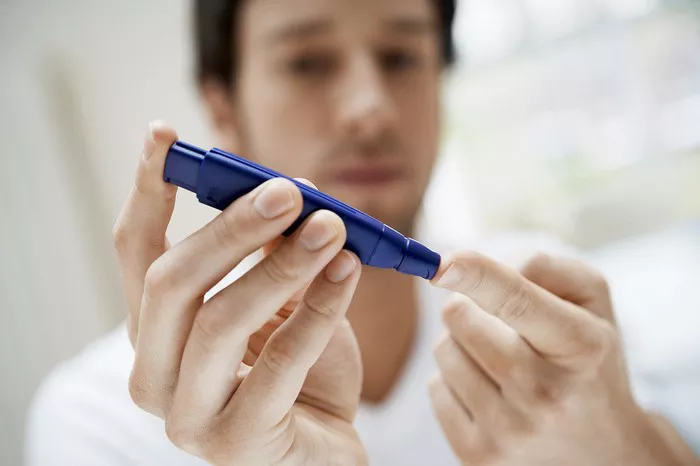Experiencing a drop in blood sugar, also known as hypoglycemia, can be a frightening and dangerous condition, especially for individuals living with diabetes. Hypoglycemia occurs when blood sugar levels fall below the normal range, often leading to symptoms such as dizziness, weakness, confusion, sweating, and in severe cases, unconsciousness. For those who manage diabetes, keeping blood sugar levels within a target range is essential for maintaining overall health. In moments when blood sugar dips, knowing what to eat is crucial in stabilizing levels and preventing further complications.
This guide will provide a thorough look at the best food options to address low blood sugar, focusing on fast-acting carbohydrates, how to balance them with proteins and fats, and the importance of long-term dietary management for preventing future drops. Whether you’re managing your diabetes with medication, insulin, or lifestyle changes, understanding what to eat during a blood sugar drop is critical to maintaining your health and well-being.
Recognizing Low Blood Sugar: The Importance of Quick Action
The first step in managing a blood sugar drop is recognizing the signs and symptoms early. The American Diabetes Association (ADA) defines hypoglycemia as a blood sugar level of less than 70 mg/dL, but symptoms may appear even before that threshold is reached. Some of the common symptoms include:
- Shakiness or trembling
- Sweating
- Feeling lightheaded or dizzy
- Increased hunger
- Irritability or mood swings
- Blurry vision
- Fatigue or weakness
- Confusion or difficulty concentrating
If you experience any of these symptoms, it’s essential to act quickly by consuming food or drink that will raise your blood sugar back to normal levels. The faster you address the situation, the fewer the risks of severe complications such as seizures, unconsciousness, or coma.
What to Eat to Raise Low Blood Sugar: Immediate Solutions
When your blood sugar drops, the body needs a quick source of glucose. For rapid relief, the following food options are the best:
Fast-Acting Carbohydrates
Carbohydrates are the most effective way to raise blood sugar levels quickly, but not all carbs are created equal. Fast-acting carbs are absorbed rapidly into the bloodstream, providing the body with immediate glucose.
The general guideline is to consume 15–20 grams of fast-acting carbohydrates when blood sugar levels fall too low. Some examples include:
Glucose tablets or gel: These are specifically designed to raise blood sugar quickly and are widely available in pharmacies. A typical serving of glucose tablets is 4 grams of carbohydrates per tablet, so 3–4 tablets will suffice.
Fruit juice (4 ounces): A small glass of fruit juice, such as orange or apple juice, provides 15–20 grams of carbohydrates. However, avoid fruit juices that are high in sugar substitutes or additives.
Regular soda (4 ounces): Non-diet sodas can quickly increase blood sugar levels, but it’s important to avoid sugar-free or diet sodas, as these contain artificial sweeteners that don’t affect blood sugar.
Honey or syrup (1 tablespoon): A tablespoon of honey or maple syrup contains about 15 grams of carbohydrates and can be a quick fix for low blood sugar.
Hard candies (3–5 pieces): Candies like Life Savers or Jolly Ranchers that contain sugar (not sugar-free varieties) are a quick and portable solution.
Raisins (1 ounce or about 1 small box): This dried fruit is rich in natural sugars and provides a convenient way to raise blood sugar quickly.
It’s essential to check your blood sugar 15 minutes after consuming these fast-acting carbs to ensure it has returned to normal levels. If your blood sugar is still below 70 mg/dL, consume another 15–20 grams of carbohydrates.
Foods with Balanced Carbs, Protein, and Fat
Once your blood sugar has stabilized with fast-acting carbohydrates, it’s crucial to prevent another drop by consuming foods that offer a balanced combination of carbohydrates, protein, and healthy fats. These macronutrients help keep blood sugar steady and provide longer-lasting energy.
The following options are excellent choices for post-hypoglycemia recovery:
Peanut butter and whole-grain crackers: The healthy fats and protein in peanut butter, along with the complex carbohydrates in whole-grain crackers, help slow the absorption of sugar and maintain steady blood sugar levels.
Apple slices with almond butter: Apples provide fiber and a moderate amount of carbohydrates, while almond butter offers protein and fat for sustained energy.
Cheese and whole-grain bread: The combination of protein and fat in cheese, along with the slow-digesting carbs from whole-grain bread, creates a more balanced blood sugar response.
Greek yogurt with berries: Greek yogurt offers protein and fat, while the berries provide natural sugars and fiber to support blood sugar regulation.
Boiled eggs with a small banana: Eggs provide protein and healthy fats, while bananas offer a source of natural sugars and fiber that helps with steady glucose absorption.
These meals not only help raise blood sugar but also ensure it doesn’t drop again too soon, which is a risk when fast-acting carbs are consumed without anything to stabilize them.
Preventing Hypoglycemia: Long-Term Dietary Management
While knowing what to eat during a blood sugar drop is crucial, preventing future drops is just as important. Regularly monitoring blood sugar levels and eating balanced meals throughout the day is key to avoiding fluctuations. Here are some long-term strategies for blood sugar control:
Maintain a Consistent Meal Schedule
Eating regular meals and snacks at consistent times each day helps prevent large swings in blood sugar. Skipping meals or going too long between meals can increase the risk of hypoglycemia. Make sure your meals include a balance of complex carbohydrates, lean proteins, and healthy fats to stabilize blood sugar levels over time.
Choose High-Fiber, Low-Glycemic Foods
Foods with a low glycemic index (GI) and high fiber content are ideal for blood sugar control because they release glucose into the bloodstream more slowly. Incorporate the following foods into your diet:
- Whole grains like quinoa, brown rice, and oats
- Non-starchy vegetables like spinach, kale, and broccoli
- Legumes such as lentils, beans, and chickpeas
- Fruits like berries, apples, and pears (in moderation)
- Nuts and seeds for healthy fats and fiber
These foods help prevent spikes and crashes in blood sugar levels, providing a steady source of energy throughout the day.
Stay Hydrated
Dehydration can worsen blood sugar control. Drink plenty of water throughout the day to help maintain optimal hydration levels, which aids in glucose transport and overall metabolic health. Aim for at least 8 cups of water daily, and more if you are physically active or in hot environments.
Include Protein with Every Meal
Protein helps stabilize blood sugar by slowing the absorption of glucose and providing a feeling of fullness, which can prevent overeating and blood sugar imbalances. Good sources of protein include:
- Lean meats like chicken, turkey, and fish
- Tofu, tempeh, and other plant-based protein options
- Eggs and dairy products like cheese and yogurt
- Legumes and beans for plant-based protein
Protein-rich foods can help prevent the blood sugar dips that lead to hypoglycemia, especially if consumed with complex carbs.
Limit Refined Sugars and Processed Foods
Refined sugars and processed carbohydrates cause rapid spikes in blood sugar followed by sharp drops, which can trigger hypoglycemia. Avoid sugary drinks, candy, baked goods, and foods high in refined flour, and instead focus on whole, unprocessed foods that support steady blood sugar regulation.
Adjust Medication and Insulin Dosage
For individuals using insulin or other diabetes medications, it’s important to work with a healthcare provider to adjust doses based on activity levels and dietary choices. A well-adjusted medication regimen can help prevent hypoglycemia while maintaining blood sugar within a healthy range. Always follow the guidance of a healthcare professional when making any adjustments to medications.
When to Seek Medical Help
If you experience frequent or severe episodes of hypoglycemia, it’s essential to seek medical advice to assess the underlying cause and adjust your treatment plan accordingly. In cases where symptoms of hypoglycemia become severe, such as confusion, seizures, or loss of consciousness, immediate medical attention is necessary.
For individuals who live alone or are at high risk for severe hypoglycemia, it’s a good idea to carry a glucagon kit, which can be administered in case of an emergency to raise blood sugar rapidly.
Conclusion
Managing low blood sugar is a critical aspect of diabetes care, and knowing what to eat when blood sugar drops can make all the difference. By consuming fast-acting carbohydrates in the initial stages of a hypoglycemic event and following up with balanced meals that include protein and healthy fats, individuals can stabilize their blood sugar levels and reduce the risk of future drops.
Additionally, maintaining a well-balanced diet with a focus on low-glycemic foods, proper hydration, and regular meal timing will help prevent hypoglycemia and provide long-term blood sugar control. Through thoughtful planning and regular monitoring, individuals with diabetes can manage their condition effectively and maintain their quality of life.
Remember, it’s always best to consult with a healthcare professional to tailor a dietary and treatment plan that works best for your unique needs.
Related topics:
How to Eat to Reverse Prediabetes


























